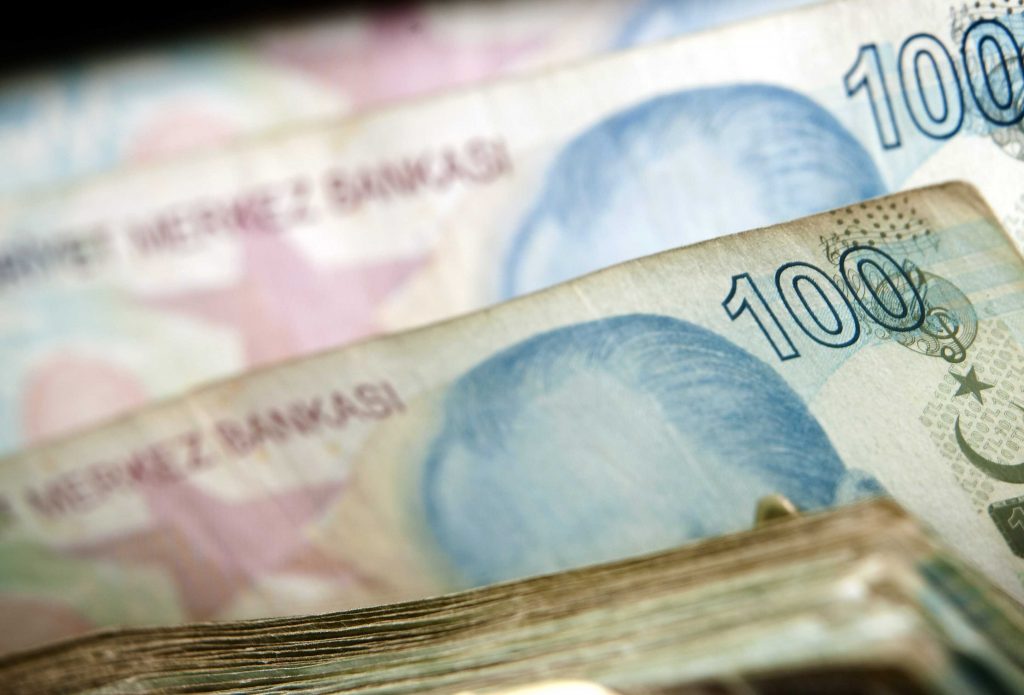
Speculating with Lives
By Horand Knaup, Michaela Schiessl and Anne Seith
In recent years, the financial markets have discovered the huge opportunities presented by agricultural commodities. The consequences are devastating, as speculators drive up food prices and plunge millions of people into poverty. But investors care little about the effects of their deals in the real world.
The room in which the world’s food is distributed looks everything but appetizing. Bits of paper and disposable cups litter the trading floor at the Chicago Board of Trade (CBOT). Sweaty men in bright yellow, blue or red jackets walk around, seemingly oblivious of the debris beneath their feet, waving their hands, shouting and scrapping over futures contracts for soybeans, pork bellies or wheat.
Here, in the trading room of the world’s largest commodity futures exchange, decisions are made about the prices of food — and, by extension, the fates of millions of people. Those decisions affect both hunger on the planet and the wealth of individual investors.
For Alan Knuckman, there is hardly a nicer place than the CBOT trading floor. “This is capitalism in its purest form,” the commodities expert raves. “This is where millionaires are made.” The 42-year-old’s face shines with a boyish glow — perhaps because he has never stopped playing.
Knuckman arrived here 27 years ago, and quickly advanced from his first job as a runner in the trading room to a trader. He worked for brokerage firms, soon established his own firm and is now an analyst with Agora Financials, a consulting firm specializing in commodities investments. He also writes a newsletter that offers investment tips. “I trade in anything you can get in and out of quickly,” he says candidly. “I’m here to make money.”
‘I Believe in the Market’
How he makes money doesn’t make any difference to Knuckman. He draws no distinctions among commodities like petroleum, silver or food products. “I don’t believe in politics,” he says. “I believe in the market, and the market is always right.”
How does he feel about exploding food prices? For Knuckman, they are purely a reflection of supply and demand. And speculators? They’re good for the market, because they predict developments early on. Is there excessive speculation? “I don’t see it.”
It’s a surprising comment. Never before has so much cash flowed into financial transactions involving agricultural commodities. In the last quarter of 2010 alone, the amount of money invested in these commodities tripled compared with the previous quarter. There has been a lot of money in the market since the countries of the world tried to overcome the financial crisis with massive economic stimulus programs and bailout packages.
Agricultural commodities attract investors who are no more interested in grain than they were previously in dot-com companies or subprime mortgages. They range from giant pension funds to small private investors searching for new, safer investment options.
Satisfying the Demand
The large index and agriculture funds now being offered by the banks seem to have come along just at the right time to satisfy this demand. All of a sudden, the world’s food supplies have become a tradable commodity, as easy to handle as stocks.
The downside is that food prices are rising in parallel to the ravenous demand for agricultural securities. In March, the Food and Agriculture Organization of the United Nations (FAO) reported new record high prices, which even surpassed the prices during the last major food crisis in 2008. According to the FAO’s Food Price Index, overall food costs rose by 39 percent within one year. Grain prices went up by 71 percent, as did prices for cooking oil and fat. The index had reached 234 points in July, only four points below its all-time high in February.
“The age of cheap food is over,” predicts Knuckman, noting that this can’t be such a bad thing for US citizens. “Most Americans eat too much, anyway.”
For his fellow Americans, who spend 13 percent of their disposable income on food, the price hike may be an annoyance. But for the world’s poor, who are forced to spend 70 percent of their meager budgets on food, it’s life-threatening.
Since last June alone, higher food prices have driven another 44 million people below the poverty line, reports the World Bank. These are people who must survive on less than $1.25 (€0.87) a day. More than a billion people are starving worldwide. The current famine in the Horn of Africa is not only the result of drought, civil war and corrupt officials, but is also caused by prohibitively high food prices.
‘Side Effects’
Knuckman refers to the fact that the poorest of the poor can no longer pay for their food as “undesirable side effects of the market.” Halima Abubakar, a 25-year-old Kenyan woman, is experiencing these supposed side effects at first hand.
She is sitting in her corrugated metal hut in Kibera, Nairobi’s biggest slum, wondering what to put on the table this evening for her husband and their two children. Until now, the Abubakars were among the higher earners in Kibera. The family managed to feed itself adequately with the monthly salary of €150 that Halima’s husband earns as a prison guard.
But that has suddenly become difficult. The price of corn meal, the most important food staple in Kenya, is now at a record high after increasing by more than 100 percent in only five months. Potato prices went up by a third, milk is also more expensive, and so are vegetables.
Abubakar doesn’t know why this is the case. She only knows that she suddenly has to pay close attention to how she spends the family’s meager daily food budget of about 300 shillings (€2.30). Her first step was to switch to a cheaper brand of corn meal. It doesn’t taste of much, but at least it fills one’s stomach. She sometimes goes without her own lunch so that her children can have enough to eat.
List of Possible Reasons
“More poor people are suffering and more people could become poor because of high and volatile food prices,” World Bank President Robert Zoellick said in April, describing the brutal effects of price increases on consumers in developing countries. The problem has many experts deeply concerned. The probable reasons for the price explosions are cited again and again at meetings and conferences. They include:
- Climate change, which leads to droughts, floods and storm, and thus to crop failures;
- The cultivation of biofuels, which takes valuable farmland out of food production;
- The global population, which is growing too fast for agricultural production to keep up;
- The emerging economies China and India, whose citizens are consuming greater quantities of higher quality food;
- The rising price of oil, which makes it more expensive to produce and ship food products;
- The rise in meat consumption, which means that more grain is needed for animal feed;
- Decades of neglecting agriculture, especially in hunger-prone regions.
All of these factors sound logical and plausible, and some undoubtedly contribute to the tense food situation. Yet they are not responsible for the excessive price hikes.
Olivier de Schutter, the United Nations special rapporteur on the right to food, is one of the few who is trying to set the record straight. The production of biofuel and other “supply shocks” — such as crop failures and export bans — were “relatively minor catalysts,” he wrote recently. “But they set off a giant speculative bubble in a strained and desperate global financial environment.” He identifies the true culprits as major investors who, as the financial markets have dried up, have invested heavily in the commodities trade, expanding it beyond all proportion. According to de Schutter, excessive speculation is the primary cause of the price increases. Indeed, closer inspection reveals that the reasons cited to date for the price hikes on food products are somewhat dubious.
- Part 2: Every Bubble Needs a Story
- Part 3: Number of Speculators Will Continue to Grow
- Part 4: ‘It’s the Government’s Responsibility to Feed People’
www.spiegel.de, 09/01/2011
 Baku, Fineko/abc.az. State Oil Company of Azerbaijan (SOCAR) has reconsidered terms of construction start of new oil-refinery in Aliaga region(Izmir,Turkey) for the needs of Petkim Holding.
Baku, Fineko/abc.az. State Oil Company of Azerbaijan (SOCAR) has reconsidered terms of construction start of new oil-refinery in Aliaga region(Izmir,Turkey) for the needs of Petkim Holding.



